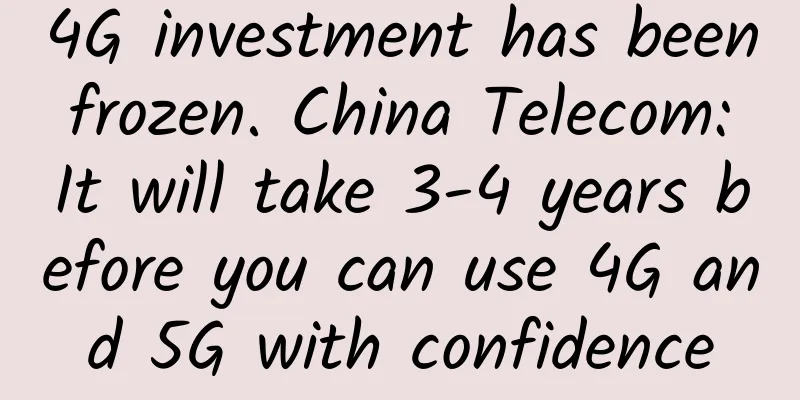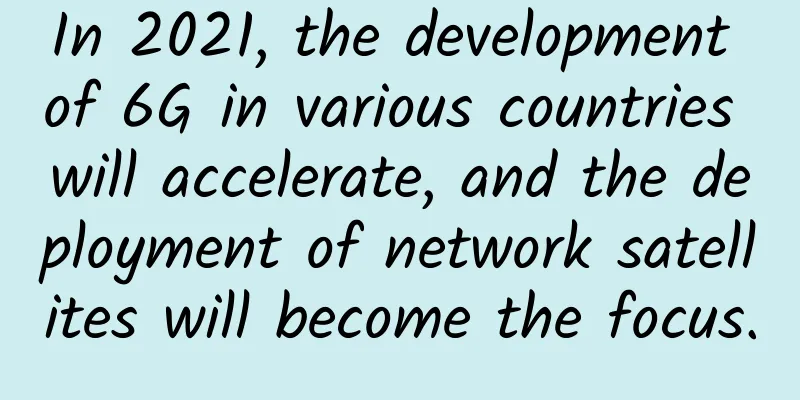Is the golden mean the way to go in data centers? CommScope's new products help maximize data center network effectiveness

|
[Original article from 51CTO.com] After years of evolution, what is the development trend of the data center network? In the view of Wu Jian, technical director of CommScope North Asia, the foundation of the data center is actually mainly the network foundation. There are two very good "weapons" to judge the development of the network - standardization and foresight. If we want to let these two weapons promote the growth of the data center, there is still a lot of work to be done. Wu Jian said that CommScope has found from several large and small cases in the data center field that the "golden mean" is a good choice for data centers. He emphasized that the golden mean is not inaction, but the result of finding the best optimization solution and balancing all parties. Then, he shared the evolution trend of the network infrastructure of data centers from three levels: the evolution of design architecture, the evolution of network interfaces, and the evolution of management methods . Data centers should also follow the "golden mean"
In the evolution of the design architecture, Wu Jian talked about that when the network of the data center is large enough, the link channel such as the signal transmitted by a server is actually very complex. For example, the signal may be from EDA to MDA, or it may be directly connected, or it may be connected after multiple jumps. So how can we ensure sufficiently high bandwidth and distance when there are multiple connections in the data center? This actually provides impetus for the evolution of the product. There are two product models in CommScope's product line that solve the above problems and are of epoch-making significance. The six-link single-mode 100G link model can be connected to 620 meters; the multi-mode 100G model has a connection distance of 370 meters. "This ensures that we can complete it with long-distance multiple connections in the future 40G and 100G." Wu Jian explained, "Data centers are speeding up faster and faster and their scale is getting larger and larger, so the demand for multiple connections and the product guarantee under such extremely harsh conditions are very important to CommScope." According to a report, the internal traffic of data centers accounts for 70% of the entire Internet traffic, which is a very alarming traffic. Under such a trend, what will the physical architecture of data centers look like? Wu Jian said that there are many forms of physical architecture, such as the head of the column MOR, EOR, or the centralized method, distributed method, regional method, and even the cabinet top method and TOR method, which are all very common. So how to find a balance point among these many methods? The premise of this balance point is to achieve a balance of three resources, namely power resources, network interface resources, and space resources. Wu Jian emphasized that in the process of continuous adjustment of these three resources, a dynamic balance has emerged, that is, TOR technology is increasingly used in data centers. TOR technology can reduce the management and layout of cables from the HDA column head to the horizontal wiring, and only complete the jumper connection inside the cabinet. The advantage is that the wiring is simplified, and the disadvantage is that the investment in equipment is increased and the management difficulty is increased. Wu Jian found that during the deployment process, users are very smart. They will not accept TOR in its entirety, nor will they blindly let all EDAs completely adopt structured wiring. What users do is to find a balance point. Standardization is strongly recommended to be introduced into the jumper connection of management points or passive devices as much as possible, but for devices, they may be more willing to deploy themselves to the end. In fact, this is the balance between the layout of wiring and the deployment of network equipment. The evolution of network interfaces also reflects what Wu Jian called the "golden mean". When network device interfaces become more and more diverse, how can we standardize and forward-lookingly guarantee them? What kind of solution should be used to connect them? This requires bargaining and balancing in the development trend of diversified interfaces and finding a balance point in the evolution. Wu Jian took transceivers and cabling as an example. CommScope moderately improved the encoding and decoding capabilities and multiplexing capabilities of the equipment, rather than extremely increasing the equipment cost, price, and the price increase caused by lasers, which ultimately made users bear high costs. When talking about the evolution of management methods, Wu Jian talked about the concept of automated infrastructure management. He believes that cabling must pay attention to intelligence and introduce the concept of sensors in the passive physical layer. In a sense, intelligent cabling is the introduction of IOT technology to its own management, and the introduction of IOT technology to the cabling system itself is intelligent infrastructure management. After the introduction of CommScope's hardware and software management platform, it is easy to find end-to-end connection relationships. This is the value of intelligence - reducing failures, improving efficiency, and improving the level of operation and maintenance. Maximize the utility of data center backbone network
In an interview, Lan Chen, vice president of CommScope Enterprise Networks North Asia, said: "Data center managers need to ensure that their basic network architecture can handle large amounts of video downloads and uploads, massive data analysis, and overall demand growth. CommScope's team can help identify, design and build data centers that can meet current and future needs, and enable them to expand or shrink quickly and efficiently. It can be said that flexibility creates a strong network backbone." The latest features in the high-speed network upgrade platform include ultra-high-density patch panels (EHDs), which can support ultra-low-loss single-mode and multi-mode optical fibers and a variety of patching components, and can be safely upgraded or maintained while online. In addition, CommScope also provides a fiber performance calculator that can predict application performance. This tool can help customers calculate loss targets for designed high-performance links, and provide remote support for high-speed single-mode or multi-mode applications. CommScope's industry-leading application assurance guarantees full support for current and future applications, while most other assurances on the market discuss component performance levels rather than overall link performance. Other features of CommScope’s overall portfolio offer modular ultra-low-loss (ULL) components that ensure scalability and flexibility for cloud, hyperscale or enterprise-class infrastructures. • Interchangeable 8-, 12- and 24-fiber MPO modules enable IT managers to fully utilize existing fiber backbones and add more capacity • Singlemode and multimode ULL fibers optimize infrastructure investment budgets and extend lifecycles • OM5 broadband multimode fiber increases the value of multimode fiber by reducing the cost of achieving 100G (or higher) Ethernet speeds • Ultra-low loss (ULL) performance maximizes the choice of network speed, range, and topology, enabling flexible and agile network enhancement CommScope's high-speed network upgrade product portfolio can be used for duplex and parallel applications, allowing customers to decide the optimal architecture. The high-speed network upgrade platform can support higher speeds and emerging applications without dismantling and replacing the basic architecture. In addition, CommScope's rigorously trained team of network architects can deeply understand customers' business needs and provide customers with profound insights into the future data center ecosystem and technology development trends, making CommScope a truly trustworthy partner for customers. [51CTO original article, please indicate the original author and source as 51CTO.com when reprinting on partner sites] |
>>: Huawei's approach to building smart cities under four major constraints
Recommend
5G cannot be rushed into implementation. Three new 4G/5G vulnerabilities have been exposed
In 2019, 5G has been promoted in full swing, but ...
Key 5G limitations facing enterprises
As interest in 5G cellular technology grows, ente...
Active-active data centers are key to high-availability application resiliency
Enterprises that rely on high-availability applic...
Yecao Cloud year-end promotion: Hong Kong VPS annual payment starts from 138 yuan, Hong Kong dedicated server starts from 299 yuan/month
As 2022 is coming to an end, the Chinese business...
Operators are satisfied with 4G, what can they do after 5G is commercialized?
In the early stage of 4G development, the dividen...
Focusing on next-generation switching architecture, Aruba launches industry's first distributed services switch
Aruba, a Hewlett Packard Enterprise (NYSE: HPE) c...
External tools connect to SaaS mode cloud data warehouse MaxCompute practice
This sharing will be explained from four aspects....
In the ranking of domestic mobile data usage, Tibet ranks first and Shanghai ranks second to last
Recently, the Ministry of Industry and Informatio...
Why does the cluster need an Overlay network?
Engineers who have a little knowledge of computer...
Pesyun: 188 yuan/month-8 cores/32GB memory/500G SSD/30M/Los Angeles & Portland data centers
Pesyun (Standard Interconnect) has launched the 2...
CloudCone Easter Promotion: $15/year KVM-1GB/30GB/3TB/Los Angeles Data Center
CloudCone offers three special VPS packages for t...
Interpretation of China's first LTE IoT multi-mode field test: Industry chain collaboration resolves the long-tail fragmentation problem
Recently, Qualcomm has cooperated with China Mobi...









